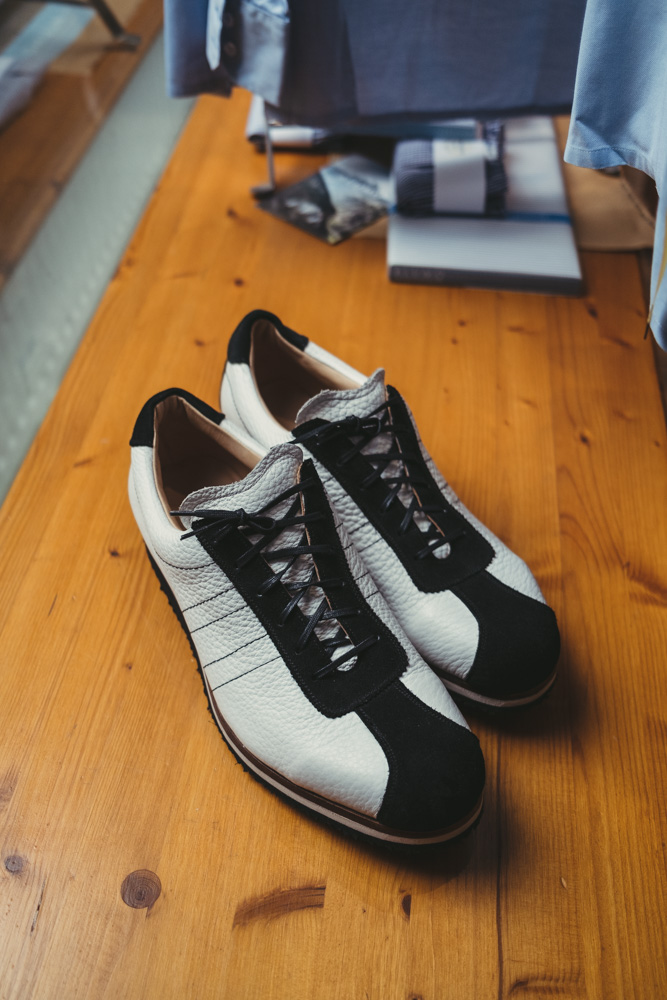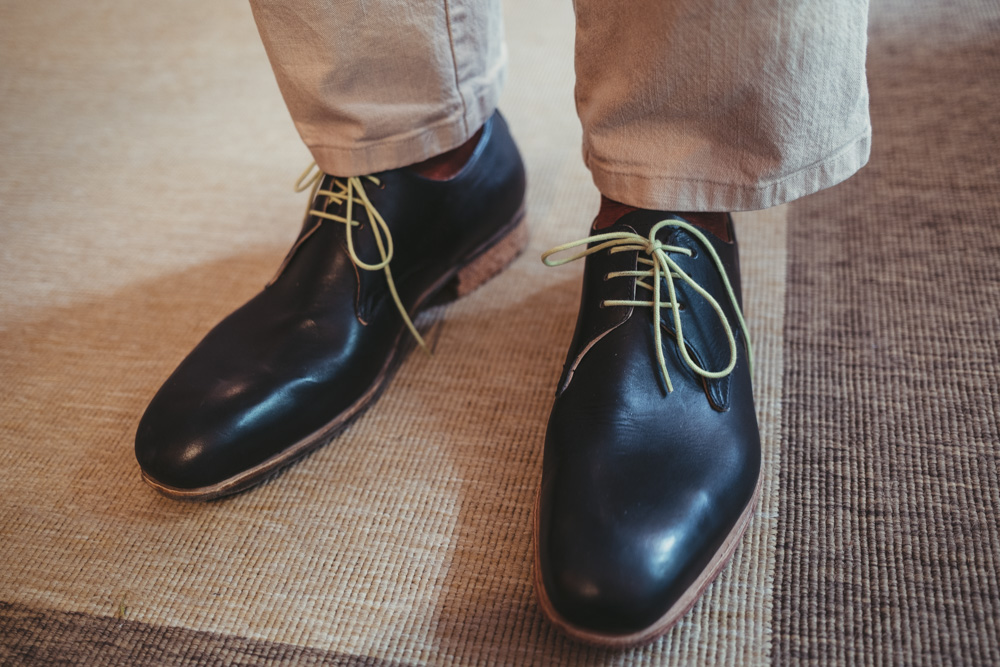You are reading Part 2. You can find Part 1 here. We will publish the third and final instalment soon, with the finished pair of shoes.
The success of bespoke clothes relies on the fittings. Even more so in the case of bespoke shoes. What good is the most beautiful handwork if the shoe doesn’t fit? But what does it mean when we say “the shoe fits”? That it doesn’t feel “too tight”? That it fits “snugly”? What one customers perceives as too tight feels perfect to another. Bespoke shoemakers have a very difficult task to fulfill, a more difficult one than bespoke tailors. The customer of a bespoke tailor can say that he doesn’t like the style or the look of the suit, nevertheless it is pretty easy to agree about the quality of the fit in front of the mirror. If the trousers feel too tight it is easy to see if they really are too tight.
When the customer slips into the trial shoe his feedback is almost entirely based on his perceptions. The shoemaker may look at the shoe or palpate the feet, he can even cut open the trial shoe to see how the feet are embedded inside it. But if the customer feels a bit of pressure here or there the shoemaker cannot argue. How the shoes are felt by the customer also depends on his knowledge about shoes and how they should fit and on the shoes he is used to wearing. If the customers wears “healthy” or “sensitive” shoes with supportive insoles and an asymmetric shape he will judge the sensation of the trial shoe differently than someone used to wearing welted shoes built on traditional English lasts. But no matter what the customer knows or thinks, he has to feel that the trial shoe fits.
For obvious reasons the fitting of the trial shoes had to be postponed for a couple of weeks. We met at the shirtmaker Campe & Ohff in Hamburg, a shop the Viennese shoemaker has been visiting for many years. Lucian Maftei wore the same jacket, jeans and trousers as he did on the first occasion we met. When we entered the shop he was arranging his latest creation on a table, lightweight ready-to-wear sneakers in a couple of variations. They are constructed with woodpeggs but are still surprisingly flexible. My trial shoes were waiting inside their cloth shoe bags. When Lucian Maftei took them out I was pleased with their narrow and slim silhouette. It was easy to slip into them using a shoehorn and they immediately felt good on my feet. They fit precisely around my heel and snugly around the midfoot. The toes had enough room to move and the shoes also felt comfortable when I stood up.
Lucian Maftei asked me to walk around a bit in the shop and comment on the fit of the shoes while moving. While walking I felt a bit of pressure across the base of the toes on both feet so Lucian Maftei wrote a little note on top of the shoes with his ballpoint pen. He could tell by the way the uppers creased that my perception was not unfounded. I also asked for a little more room my right pinky toe. I found the shoes a tad too long but in fact they were not longer than the shoes I wore that day. The shoes only appeared to be longer than they were because of the cut of the short quarters with six eyelets and the long vamp. My narrow and short trousers also made the shoes appear longer. Lucian Maftei will enlarge the quarters by adding another pair of eyelets which is the only change to the cut of the uppers. We agreed quickly to dismiss my idea to shorten the last a bit, Lucian Maftei convinced me that the shoes will look less elongated when he has changed the shape of the quarters. I assume that the proportions of the finished shoes will be perfect when I see them in the brown leather they will be made out of. We will see them in about four weeks when we meet again in Hamburg.















